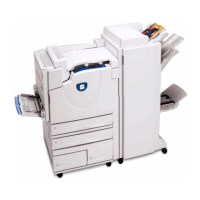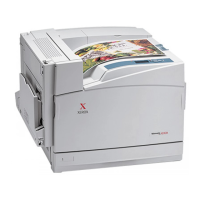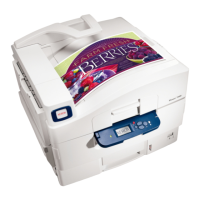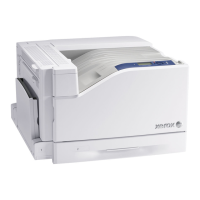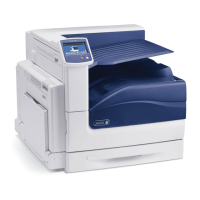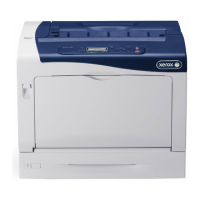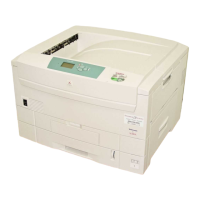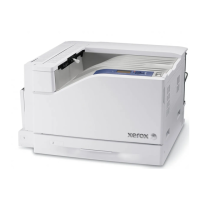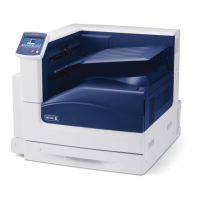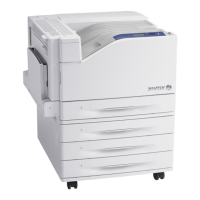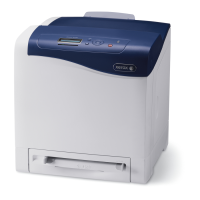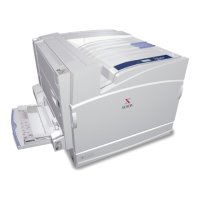
Do you have a question about the Xerox 7750DXF - Phaser Color Laser Printer and is the answer not in the manual?
Identifies the product this service manual covers.
Explains terms used in the manual for information or warnings.
Details voltage requirements and grounding procedures for safe operation.
Explains how and when to safely disconnect the printer's power cord.
General safety advice for qualified service personnel, including avoiding servicing alone and jewelry.
States compliance with Laser Product Performance Standards as a Class 1 Laser Product.
Outlines FCC rules for unintentional radiators and interference mitigation.
Declares conformity with the Low Voltage Directive for safety.
Declares conformity with the Electromagnetic Compatibility Directive for emissions and immunity.
Introduces the service manual's purpose for repairing, maintaining, and troubleshooting.
Details different printer models (7750B, DN, GX, DXF) and their features enabled by a configuration chip.
Details physical, electrical, and environmental specifications.
Provides dimensions and required clearances for the print engine and feeders.
Specifies minimum dimensions and flatness requirements for the printer's mounting surface.
Lists printing process, color medium, resolution, first page out, and warm-up time.
Details primary line voltages, frequency range, and power consumption.
Lists operating temperature, humidity, and altitude limits.
Explains the electrophotographic printing process, from charging to fixing the toner.
Describes the C-shaped paper path and available exit options for the printed media.
Lists sensors that control image quality.
Explains the Automatic Toner Concentration (ATC) sensor's role in measuring toner to bead ratio.
Describes the Automatic Density Control (ADC) sensor's function in image quality control.
Details the ADC sensor assembly's output check procedure.
Covers troubleshooting front panel error messages and codes, and recording them.
Explains how to view engine error history, jam history, and usage profiles.
Provides steps to view the printer's web page using a web browser to check fault history.
Details built-in diagnostics for sensors, motors, clutches, and test patterns.
Troubleshooting steps related to the printer's front panel display and functionality.
Troubleshooting steps for when the printer does not enter the "Ready" state after power is switched on.
Discusses print quality defects, variables to eliminate, and analyzing defects by color.
Lists common print quality issues linked to specific printer assemblies.
Lists potential defects related to the ROS (Raster Output Scanner) module.
Explains how RegiCon accomplishes registration by aligning the four primary colors.
Details the steps for performing RegiCon adjustments for optimal alignment.
Provides essential precautions and notations before starting any disassembly procedure.
Lists plug/jack numbers, map numbers, item numbers, and titles for component identification.
Provides visual maps showing the locations of various plugs and jacks on printer components.
Introduces the finisher as a customer-installed option with transport, stapler, compiler, and stacker.
Details the finisher's configuration, paper feed, power requirements, dimensions, media types, and weight.
Illustrates the external assemblies of the finisher, such as the horizontal transport and stacker.
Shows the internal assemblies of the finisher, including the control board and motors.
Provides a visual representation of the printer's front panel menu structure for navigation.
Maps out the structure and options available within the service diagnostics menu.
Lists and defines status codes used in the service usage profile for error identification.
